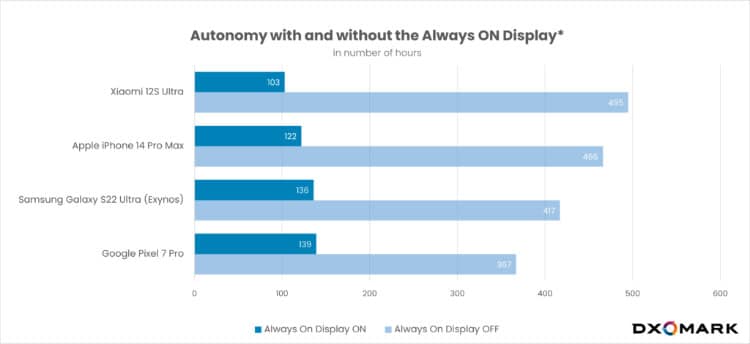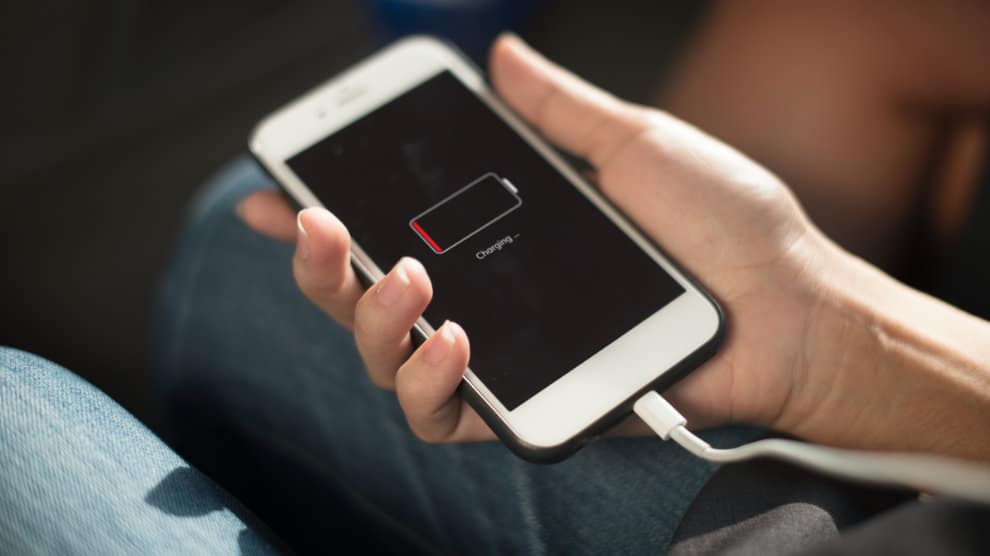Warning: this feature ravages your phone’s battery!
The mode Always On appeared several years ago on smartphones. Its purpose is to keep the screen active during standby, by displaying a minimalist version of key information: time, date, notifications, battery… Since its appearance, this feature has been touted by manufacturers as having very low battery consumption. But it seems to be wrong, according to the latest DXOMARK study.
A widely adopted feature
With the launch of the iPhone 14, Apple has brought Always On mode back into the limelight. The opportunity for the DXOMARK technology laboratory to test the real impact of this feature on smartphones. Through this study, we realize that a majority of users, 54%, keep the option activated, because they find it useful. The potential impact on the battery does not therefore seem to be a blocking element for the adoption of this mode.
Variable results depending on the models
To test the impact on the battery of Always On mode, the laboratory teams conducted tests on four smartphones: iPhone 14 Pro Max, Xiaomi 12S Ultra, Samsung Galaxy S22 Ultra and Pixel 7 Pro. The test is carried out under neutral conditions (temperature of 22°, Faraday cage, etc.) with a control without functionality activated and another model with the option activated.

The results are therefore very telling. On average, the battery of a smartphone with the Always On option activated has a very limited autonomy, between a third and a quarter of the autonomy without functionality. A huge impact, which therefore seems to contradict the arguments of the manufacturers in favor of this mode.
To gain autonomy on your battery, but also to keep it healthy in the long term, we therefore advise you to deactivate the Always On mode. Rarely useful, it is above all a gadget option that reduces the overall life of your device.


![[#BlackFriday] MacX Video Converter Pro: Best Video Converter Tool for Mac at Low Price [#BlackFriday] MacX Video Converter Pro: Best Video Converter Tool for Mac at Low Price](https://apkrig.com/wp-content/uploads/2020/11/1606596486_BlackFriday-MacX-Video-Converter-Pro-Best-Video-Converter-Tool-for.jpg)